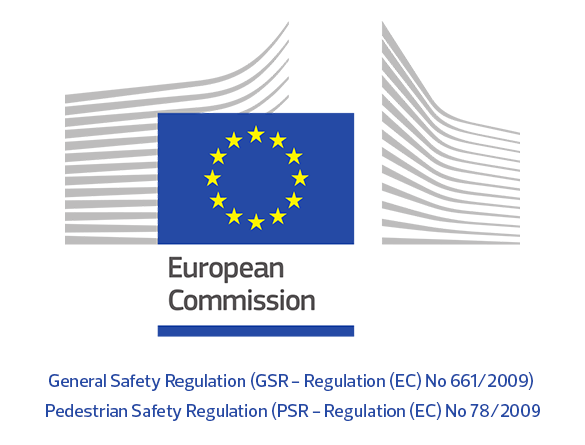Since 2014, TRL has supported the European Commission in developing new requirements and test procedures for the General Safety Regulation (GSR - Regulation (EC) No 661/2009) and the Pedestrian Safety Regulation (PSR - Regulation (EC) No 78/2009). The GSR specifies the type-approval requirements for the general safety of motor vehicles, their trailers, and systems, components and separate technical units; the PSR sets out the type-approval requirements for motor vehicles with regard to the protection of pedestrians and other vulnerable road users. All vehicles sold in the European Union must comply with the regulations.
Both the General Safety and Pedestrian Safety Regulations require the Commission to periodically report to the European Parliament and Council in relation to the monitoring of technical developments in the field of enhanced passive safety requirements, the consideration and possible inclusion of new and enhanced safety features as well as enhanced active safety technologies. TRL assisted the European Commission and identified and assessed measures and features that were suitable for possible inclusion. The work was published:
- GSR1 (2015): 50+ safety measures; indicative cost-benefit analysis and feasibility assessments; shortlist of candidate measures
- GSR2 (2017): Evidence review and large-scale stakeholder consultation; suggested input values for cost effectiveness analysis
This work identified and prioritised measures based on their benefit-to-cost ratio (BCR). The cost and benefit data were sourced from the technical and scientific literature and shared with a wide range of stakeholders. Formal meetings and feedback allowed new information to be shared and the available evidence was then graded with respect to quality, timeliness and relevance. This allowed a common view of the inputs to the cost-effectiveness model to be shared transparently.
In 2018, TRL published the “Cost-effectiveness analysis of Policy Options for the mandatory implementation of different sets of vehicle safety measures – Review of the General Safety and Pedestrian Safety Regulations”. TRL developed new analytical techniques to mathematically predict casualty and cost benefits for the simultaneous introduction of 17 different measures, which effect the same casualty groups, taking care to avoid double counting (for casualties and costs). The introduction of the new measures was compared with a predicted future where current trends of voluntary fitment continue.
TRL’s cost-effectiveness analysis directly informed the Commission’s impact assessment, and was the most complex programme of its kind undertaken. The headline result from TRL’s cost-effectiveness analysis was a positive BCR and predictions of around 25,000 fatalities prevented over a 16-year period on EU roads.
In March 2019, the EU institutions reached a provisional political agreement on the revised GSR and PSR. On 16 April 2019, the European Parliament voted to change the revised GSR and PSR, as proposed by the Commission in May 2018. This was based on the TRL cost-effectiveness report (GSR 3/4, 2018) and is the world’s biggest single change in vehicle safety regulations. As of 2022, new safety technologies will become mandatory for new EU approved types of vehicles to protect passengers, pedestrians and cyclists. The new legislation is technologically advanced and will help the European industry to remain competitive with respect to the challenges of developing automated vehicles.
In 2019, the European Commission requested TRL to support in the development of secondary type approval legislation for the following vehicle safety measures (GSR5):
- Advanced Emergency Braking Systems (light duty, vehicles and pedestrians/cyclists)
- Driver Monitoring
- Driver Drowsiness and Attention monitoring and Warning (DDAW),
- Advanced Distraction Recognition (ADR), and
- Driver Readiness Monitoring for Automated Driving (DRMAD)
- Event Data Recorder
- Emergency Lane Keeping System
- Frontal Full-Width Impact
- Pedestrian and Cyclist Enlarged Head Impact Zone
- Intelligent Speed Assistance
- Reversing Safety
- Tyre Pressure Monitoring (heavy duty vehicles)
- Direct Vision & Pedestrian and Cyclist detection (heavy duty vehicles)
Examples of published work include:
- Emergency Lane Keeping System (ELKS – final report)
- Intelligent Speed Assistance (ISA – interim report)

